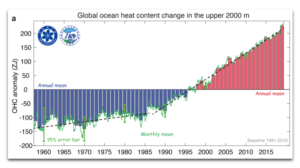by Donna Laframboise, January 12, 2020 in BigPicturesNews
Philip Munday’s work falls to pieces whenever someone tries to verify it.
Last week, Nature published a damning refutation of a significant body of climate change research. The title of that article is self-explanatory: Ocean acidification does not impair the behaviour of coral reef fishes.
The authors studied more than 900 fish from six different species over a period of three years, attempting to verify earlier findings by a team of researchers at Australia’s James Cook University. Their attempts failed.
Scholarly convention being what it is, the now-discredited work isn’t identified in a clear manner. Readers are compelled to sift through footnotes to locate the “several high-profile papers” that are being refuted. So here they are:
….

